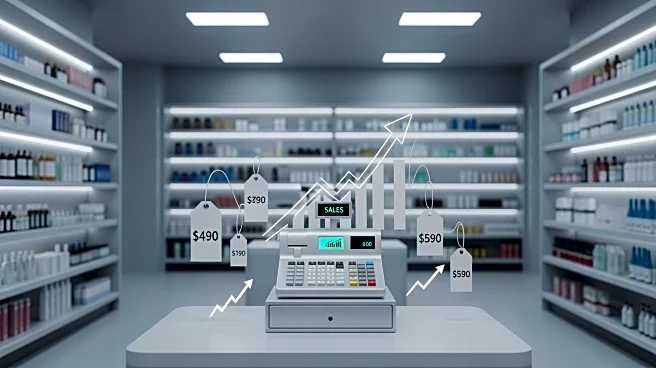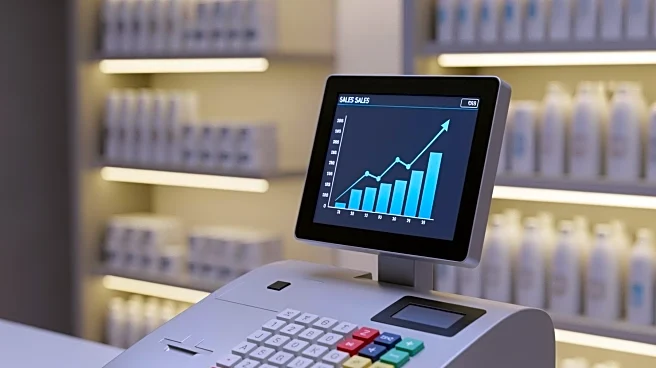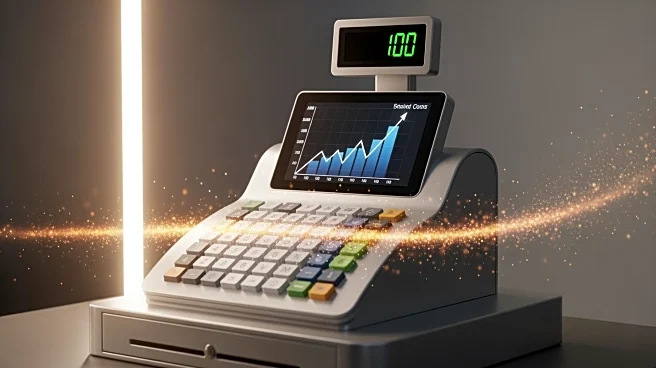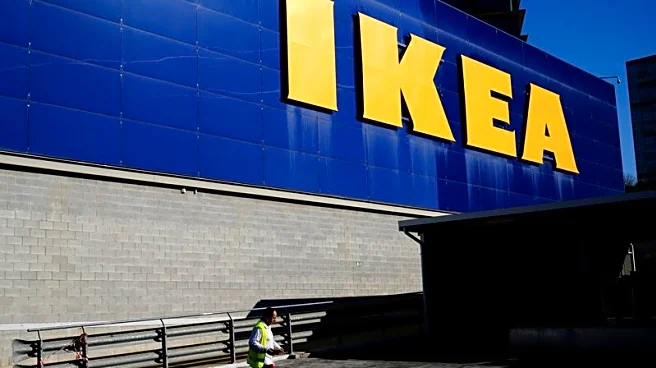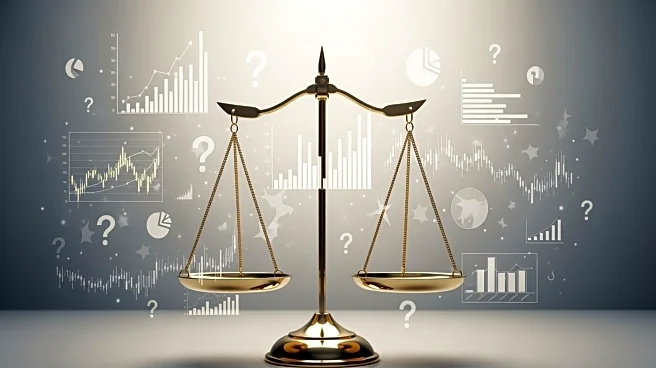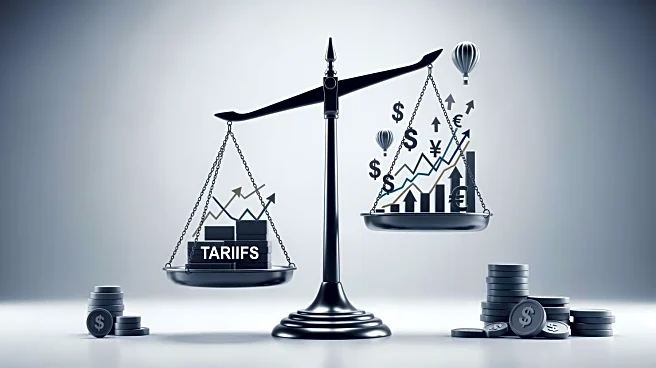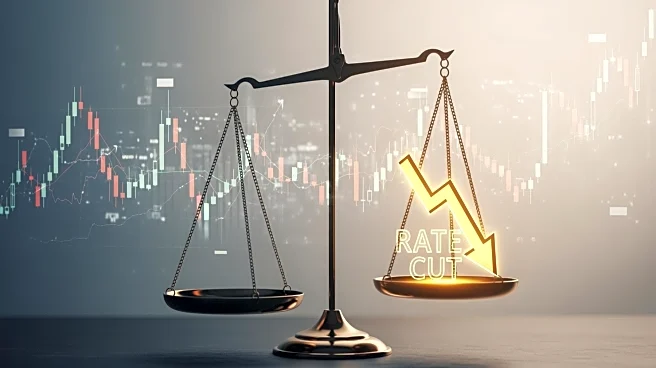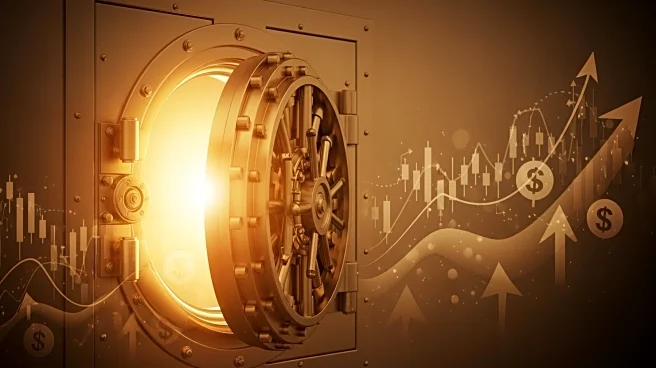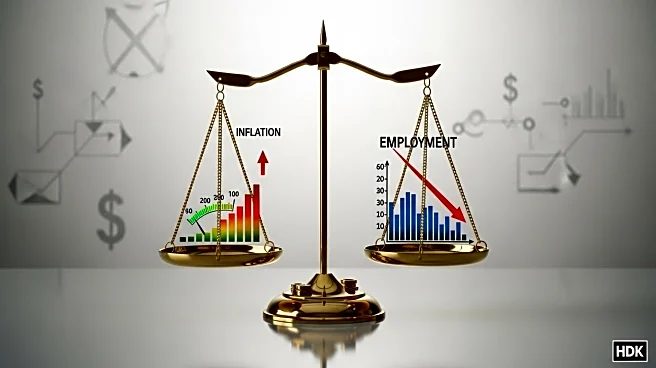What's Happening?
Retail sales in the U.S. rose in September, driven by higher prices, according to various reports. The U.S. Commerce Department did not release its retail sales report due to a government shutdown, but
other reports indicate mixed results. Bank of America Institute reported a 2% year-over-year increase in total credit and debit card spending per household, mainly in services and gasoline. The National Retail Federation noted a 5.7% increase in core retail sales, excluding restaurants, autos, and fuel. Categories such as sporting goods, clothing, and electronics saw significant growth, while furniture sales were muted. Despite these gains, inflation is impacting consumer purchasing power, with Circana reporting flat retail sales revenue compared to 2024 and a decline in unit demand.
Why It's Important?
The rise in retail sales suggests consumer spending remains robust, which is crucial for economic growth. However, the impact of inflation indicates that consumers are buying fewer products despite spending more, highlighting a potential strain on household budgets. This trend could affect retailers' strategies, prompting them to adjust pricing or offer promotions to maintain sales volumes. The disparity in spending between income groups underscores the wealth gap, with lower-income households facing softer wage gains while higher-income groups benefit from stock market and home ownership effects.
What's Next?
Retailers may need to adapt to changing consumer behavior by focusing on value-driven offerings and enhancing customer experience to retain market share. As the holiday season approaches, businesses might increase promotional activities to attract budget-conscious shoppers. The government shutdown's impact on official data releases could lead to reliance on alternative reports, affecting market analysis and decision-making. Policymakers may need to address inflationary pressures to support consumer spending and economic stability.
Beyond the Headlines
The concept of 'Invisible Inflation,' where consumers spend the same amount but purchase fewer goods, could lead to long-term shifts in retail strategies and consumer expectations. Retailers might explore innovative solutions to mitigate inflation effects, such as adopting technology to streamline operations and reduce costs. The wealth gap's influence on spending patterns may prompt discussions on economic inequality and potential policy interventions to support lower-income households.
